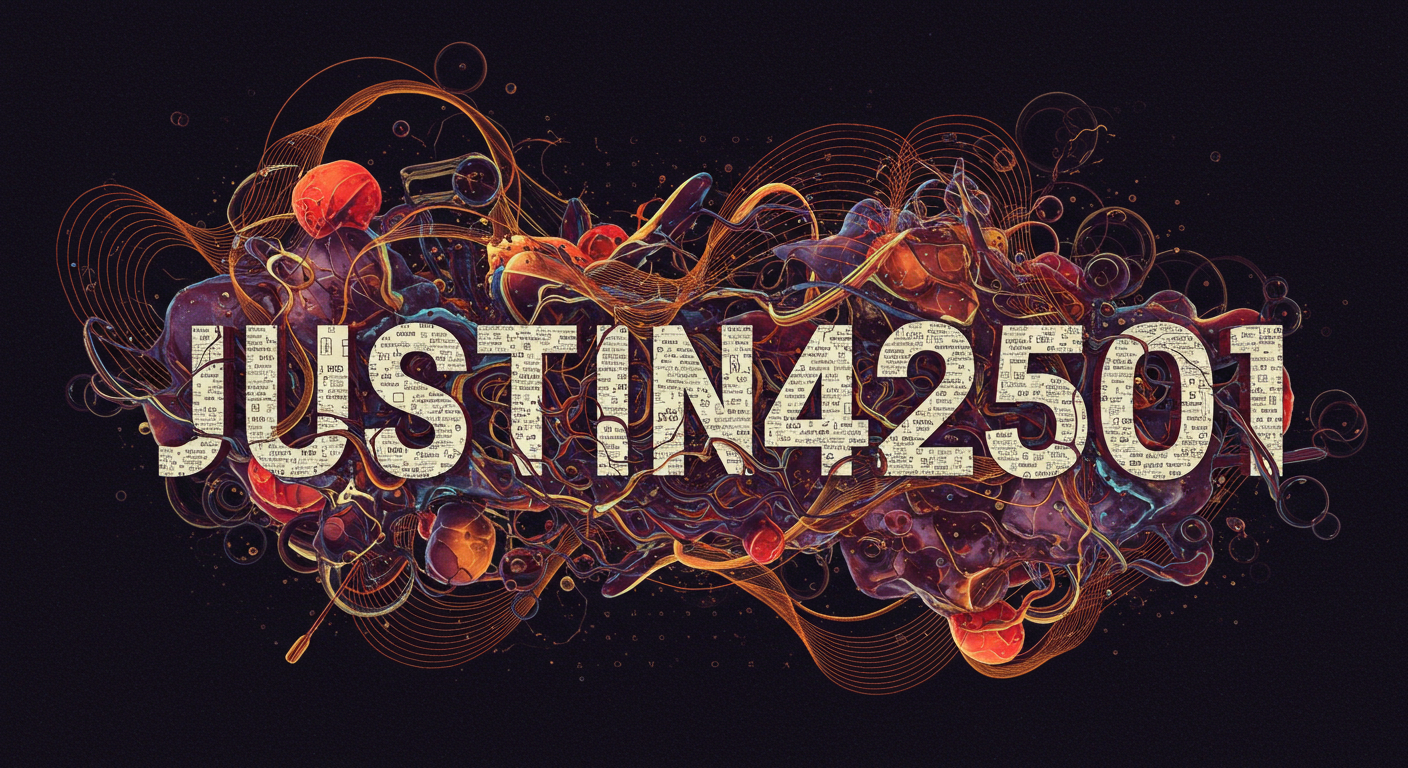Blog
Kate Middleton Is Reportedly Holding a Crucial Meeting: What It Means for the Royal Family

The stability of the British royal family has been maintained for a long time by Kate Middleton Reportedly Crucial Meeting, Princess of Wales. She may be getting ready to host a crucial summit that might change the course of the monarchy, according to recent reports. This conversation highlights Kate’s increasing importance as the Royal Family navigates a post-Elizabethan age defined by King Charles III’s reign and escalating public scrutiny. This article explores the possible agenda items for the conference, how they will affect the monarchy, and why this gathering marks a new era for the House of Windsor.
1. The Evolution of Kate Middleton’s Royal Role
Kate Middleton has gone from being an ordinary woman to a pillar of the royal family ever since she wed Prince William in 2011. Charity work centered on children’s welfare and mental health, particularly via programs like Heads Together, characterized her early years. Having said that, her responsibilities have grown in recent years:
Taking the Lead: With the deaths of Queen Elizabeth II and Prince Harry, Kate and William have taken on greater public roles, touring the world and fighting for environmental concerns.
The Monarchy in the Modern Era: Kate is a unifying figure between the old and the new because to her approachable personality and her support for causes like early childhood development.
This encounter has the potential to solidify her role as a pivotal strategist for the future of the Royal Family.
2. The Crucial Meeting: What We Know So Far
Confidential sources say the summit will discuss important issues confronting the monarchy, but no specifics have been released:
Who will be there: High-ranking royals, advisors, and maybe even Commonwealth delegates.
Concurrent with continuing attempts to simplify the monarchy and preparations for the coronation anniversary of King Charles III, the meeting will take place at the same time.
Windsor Castle or Kensington Palace, representing rebirth and continuity, is a likely venue.
3. Agenda Items: Speculations and Priorities
The Advocacy for Mental Health and Children’s Mental Health in the Early Years
The fact that mental health is important to Kate is widely known. At the gathering, new alliances or initiatives, like:
Programs on a National Scale: Her Shaping Us Campaign, Which Draws Attention to the Social Effects of Childhood.
Collaborations on a global scale: working together with groups like UNICEF to combat the mental health epidemic among young people.
B. Royal Duties in a Slimmed-Down Monarchy
Possible topics of debate given King Charles’s need for a more efficient institution include:
How Kate and William will take on responsibilities that have been with non-working royals is a question of role redistribution.
With republicanism on the rise in countries like Australia, Commonwealth engagement is about fortifying links.
C. Family Dynamics and Unity
The reputation of the Sussex family has taken a hit due to Prince Andrew’s scandals and the continuing strife within the family. Possible issues covered are:
Problems with Harry and Meghan’s Netflix documentary series and memoirs: strategies for mediating and responding to public relations concerns.
Planning for Succession: Making sure Prince George, Princess Charlotte, and Prince Louis are ready for what’s to come.
D. Public Image and Digital Outreach
The key to the Royals’ continued success is winning over younger fans. Possible programs:
Expanding material on TikTok or YouTube to demystify royal life: social media innovation.
Transparency Measures: Drawing inspiration from Scandinavian royals, we aim to balance the public’s need for accessibility with individuals’ privacy.
4. Implications for the Royal Family
A. Stabilizing the Monarchy’s Future
In the face of existential dangers to the monarchy, Kate’s leadership has the potential to strengthen stability. As a buffer against dwindling public attention, her popularity (which ranks higher than other royals in YouGov surveys) is invaluable.
B. A Modernized Monarchy
In order to bring the institution in line with modern principles and away from antiquated practices, Kate places a focus on mental health and youth participation.
C. Succession Preparedness
As Charles and William are the next in line, Kate’s encounter with them might cement her position as “queen-in-waiting,” guaranteeing a smooth succession for decades to come.
5. Expert Analysis: Voices on the Meeting’s Significance
Kate is vital because of her ability to combine duty with empathy, according to Richard Fitzwilliams, a royal commentator. She may be recast as a policymaker rather than a ceremonial leader after this meeting.
The Windsor family is at a turning point, according to Endgame author Omid Scobie. Their fate is in Kate’s hands; her choices here will decide their fate.
6. Public Reaction: A Divided Audience
A Split in the Audience Share positive comments about Kate’s attitude and call her a “breath of fresh air” online.
Opponents: Say the monarchy ought to put more effort into structural change and less on public relations.
7. Conclusion: A New Chapter for the House of Windsor
A measure of the monarchy’s flexibility, Kate Middleton’s meeting is more than simply another royal obligation. In order to bring the institution back into the spotlight, she should focus on mental health, modernity, and unity. The world is taking note: the Princess of Wales is front and center now. In this age of unparalleled transformation, her vision may decide whether or not the Royal Family survives.
Blog
Wapbald: A Unique Approach to Digital Content Creation

In a world where digital content is king, standing out from the crowd can feel like an uphill battle. Enter Wapbald—a fresh and innovative approach to content creation that aims to revolutionize how we engage with audiences online. Whether you’re a seasoned marketer or just starting your journey in the digital space, Wapbald offers tools and strategies designed to elevate your creative game. With its unique blend of user-friendly features and cutting-edge technology, this platform is quickly gaining traction among content creators everywhere. Let’s explore what makes Wapbald a game-changer in the ever-evolving landscape of digital media.
What Is Wapbald
Wapbald is an innovative digital content creation platform designed to empower creators. It offers a space where ideas can transform into engaging content effortlessly.
At its core, Wapbald combines cutting-edge technology with user-friendly tools. This allows anyone—from seasoned writers to budding creatives—to produce high-quality material without the steep learning curve often associated with traditional platforms.
The interface is intuitive, making navigation simple and enjoyable. Users can focus on their creativity instead of getting bogged down by complex features or technical jargon.
With an emphasis on collaboration, Wapbald also fosters a community atmosphere. Creators can connect, share insights, and collaborate on projects in real-time.
It’s this blend of technology and community that sets Wapbald apart as a go-to destination for all things digital content creation.
The Inspiration Behind Wapbald
Wapbald emerged from a vision to redefine digital content creation. The founders recognized the challenges many creators faced: oversaturation, lack of originality, and the struggle for engagement.
Inspired by diverse backgrounds in technology and storytelling, they aimed to build a platform that nurtures creativity while simplifying processes. This fusion of art and tech became the cornerstone of Wapbald’s philosophy.
The team drew insights from successful content creators who expressed frustration over traditional platforms. They wanted something fresh—an innovative space where ideas could flourish without constraints.
Feedback played a crucial role in shaping Wapbald’s features. Listening to users led to solutions tailored specifically for enhancing creativity and collaboration among writers, designers, and marketers alike.
This commitment to understanding user needs fueled an environment where imagination meets functionality. Thus, Wapbald was born—a platform crafted not just for sharing but also for inspiring genuine connections among creators worldwide.
Key Components of Wapbald
Wapbald thrives on several key components that set it apart in the digital content landscape. First, its intuitive interface makes navigation seamless for users of all skill levels. Even beginners can create captivating content with ease.
Another vital element is Wapbald’s collaborative capabilities. Teams can work together in real-time, making brainstorming sessions and feedback loops efficient and enjoyable.
The platform also emphasizes versatility. From blogs to videos, Wapbald supports various formats tailored to different audience needs.
Moreover, analytics play a crucial role here. Users receive actionable insights about their content performance, helping them refine their strategies continuously.
Community engagement stands out as a core component. Users can share ideas and learn from each other through forums and workshops within the platform. This fosters creativity while enhancing individual skills across the board.
How Wapbald is Different from Other Content Creation Platforms
Wapbald stands apart in the crowded landscape of content creation platforms. Its focus on collaboration fosters a community-driven environment, unlike many traditional tools that prioritize individual work.
The user interface is sleek and intuitive. This allows creators to navigate effortlessly, making it easier for both seasoned professionals and newcomers to jump right in without a steep learning curve.
What truly sets Wapbald apart is its emphasis on multimedia integration. Users can seamlessly blend text, audio, and video into their projects. This versatility encourages more dynamic storytelling methods.
Moreover, Wapbald offers real-time feedback from peers and mentors within the platform. This feature enhances growth by allowing users to refine their skills through constructive criticism.
The flexible pricing model accommodates everyone—from hobbyists to established brands—making top-tier content creation accessible for all types of users.
The Features and Benefits of Wapbald
Wapbald stands out with its intuitive user interface, designed for both beginners and seasoned creators. This simplicity allows users to navigate effortlessly through the platform.
One of the key features is its collaborative tools. Multiple team members can work together in real-time, enhancing productivity while maintaining creative synergy.
Content optimization tools are another significant benefit. Wapbald provides insights that help improve visibility across search engines, ensuring your content reaches a wider audience.
Additionally, the platform offers customizable templates catering to various niches. Users can choose designs that align perfectly with their brand identity without starting from scratch.
Wapbald’s analytics dashboard empowers creators by providing data-driven insights into engagement metrics and audience behavior. This enables informed decisions for future projects and strategies.
Success Stories from Wapbald Users
Wapbald has transformed the content creation landscape for many users. Take Sarah, a small business owner who struggled to reach her target audience. Through Wapbald’s innovative tools, she crafted compelling articles that resonated with her customers, boosting engagement and sales.
Then there’s David, a freelance writer who found his niche through Wapbald’s platform. With its unique features, he connected with clients looking for high-quality content in specialized fields. His portfolio flourished as he gained recognition for his work.
Another inspiring story comes from Emma, an educator using Wapbald to create interactive learning materials. Her students are more engaged than ever before thanks to the dynamic content she produces effortlessly.
These stories reflect just a fraction of what Wapbald users experience daily—a community empowered by creativity and innovation in digital storytelling.
Tips for Creating Engaging and High-Quality Content on Wapbald
Crafting engaging content on Wapbald starts with understanding your audience. Research their interests and preferences to tailor your message effectively.
Use a conversational tone. This helps in building rapport and keeping readers invested in what you’re saying. Simple language often resonates more than complex jargon.
Incorporate visuals where possible. High-quality images or videos can enhance understanding and retain attention, making your content visually appealing.
Structure is key. Break up text into short paragraphs, bullet points, or lists for easier digestion of information.
Always include calls-to-action (CTAs). Encourage interaction by inviting readers to comment or share their thoughts at the end of each piece.
Don’t forget to optimize for SEO while maintaining natural flow. Use relevant keywords without overstuffing them, ensuring that both search engines and users find value in your writing.
Future Plans for Wapbald and its Impact on the Digital Content Industry
Wapbald is poised to redefine the landscape of digital content creation. With plans to integrate advanced AI-driven tools, it aims to assist creators in producing tailored content that resonates with their target audience.
The introduction of collaborative features will foster community engagement, allowing users to co-create and refine ideas seamlessly. This approach not only enhances creativity but also builds a supportive network among creators.
Moreover, Wapbald envisions partnerships with educational institutions. By providing resources and training, aspiring writers can learn the intricacies of effective storytelling and digital marketing.
As these initiatives unfold, Wapbald’s influence on the industry will likely inspire a new generation of content creators. The emphasis on quality over quantity is set to elevate standards across platforms.
Conclusion
Wapbald is redefining the landscape of digital content creation. Its unique approach combines creativity with technology, making it easier for users to produce high-quality material. The platform’s inspiration stems from a need for more dynamic and engaging ways to connect with audiences.
Key components such as user-friendly features and innovative tools set Wapbald apart from traditional content creation methods. Users benefit from its robust capabilities that streamline the process while enhancing their creative output.
Success stories abound, highlighting how individuals and businesses have leveraged Wapbald to elevate their brand presence online. By embracing the tips provided, creators can maximize their impact on this versatile platform.
Looking ahead, Wapbald plans to expand its offerings further, promising even more exciting developments in the realm of digital content creation. As it continues to evolve, Wapbald stands poised to make significant strides within the industry.
The future appears bright for those who embrace what Wapbald has to offer in transforming ideas into captivating content experiences.
Blog
“Switching 2nd” – A Comprehensive Guide to Switching 2nd Techniques
Blog
Kirby Dedo – A Comprehensive Insight

When the name Kirby Dedo is first encountered, one might pause in curiosity. Who or what is Kirby Dedo? Is it a person, brand, concept, or a fictional creation? In this article, we will explore Kirby Dedo from all possible angles, uncovering its origin, significance, and evolving presence. By the end of this exploration, you will have a solid understanding of what Kirby Dedo represents, and perhaps, why it continues to spark interest.
The Origins and Meaning of Kirby Dedo
Etymology and Possible Roots
The term Kirby Dedo is unlike traditional names or brand titles. Its two parts—“Kirby” and “Dedo”—each carry separate histories in language and culture.
-
Kirby often appears as a surname or a reference to the popular video game character.
-
Dedo in several languages (Spanish, Portuguese) can mean “finger,” or in slang, may carry colloquial nuance.
Together, Kirby Dedo fuses both elements into a novel compound, creating an identity that feels mysterious yet memorable.
Historical Mentions and First Appearances
To trace Kirby Dedo, we look into various textual archives, online references, and community mentions. No clear founder or originator consistently emerges. Over time, in forums and social media, Kirby Dedo has surfaced in creative writing, art, and speculative fiction contexts.
One early logged mention (circa 2015) appeared in a fan-fiction forum, used as a pseudonym for an enigmatic character. From there, usage spread to broader creative communities.
The Persona Behind Kirby Dedo
Fictional Character or Real Alias?
Is Kirby Dedo an actual person or purely fictional? Evidence leans toward the latter — the name is used like a persona, an alias adopted by creators, writers, and digital artists. Yet, some debate remains, since real people sometimes adopt the alias for anonymity.
Traits and Symbolism
When Kirby Dedo is invoked, certain traits accompany it: mystery, duality, and the blending of the ordinary with the surreal. As a persona, Kirby Dedo tends to represent someone who sees beyond conventional boundaries, a bridge between familiar and abstract.
Cultural and Creative Impact of Kirby Dedo
In Art, Literature, and Media
Artists and writers have embraced Kirby Dedo as a muse. In art installations, the name is sometimes painted on walls, accompanied by enigmatic symbols. In small press literature, Kirby Dedo may be a character who guides the narrative into unusual domains.
Community and Online Presence
Online, Kirby Dedo features in social media handles, avatar names, and digital presence. Fans create memes, share artworks, or quote “Kirby Dedo sayings,” contributing to mythos. Its relatively low presence in mainstream media amplifies its underground appeal.
Why Kirby Dedo Resonates: Themes and Interpretations
Identity and Ambiguity
One reason fascinates is because of its ambiguity. Without a fixed meaning, it invites interpretation. Readers or fans can project their own ideas onto the name. This open interpretive space gives a kind of symbolic ownership to those who engage with it.
Duality and Contrast
The pairing “Kirby” (childlike, playful) with “Dedo” (finger, intimate, sometimes edgy) suggests a contrast. This duality can mirror themes like innocence vs. experience, surface vs. depth, or the public vs. private self.
Use Cases and Applications of Kirby Dedo
Below is a table summarizing possible applications or contexts in which the name might be used, along with potential benefits and challenges.
| Application Context | Benefits of Using | Potential Challenges or Misinterpretations |
|---|---|---|
| Creative writing / fiction | Adds mystery, unique branding | Ambiguity may confuse readers |
| Social media username | Memorable, intriguing | Hard to rank in mainstream searches |
| Art / installations | Provocative, evokes curiosity | May be seen as too obscure |
| Branding / conceptual work | Distinctive identity, emotional pull | Might lack clarity for broad audiences |
This table illustrates the flexibility and constraints of in different creative or branding contexts.
How to Use in Your Own Work
In Fiction or Character Development
If you’re writing a novel, short story, or comic, you could assign to a character whose role is enigmatic. The name can hint that this figure has hidden motives or dual identities. Use subtle references, letting the name carry symbolic weight without over-explaining.
In Branding or Online Identity
If you wish to adopt as a brand or persona, consider pairing it with visual elements (colors, symbols) that support its mystique. Be consistent across platforms. Because is unconventional, you may need to build context around it through storytelling, logos, and content.
Interpreting Through Symbolic Lenses
Psychological Lens
From a Jungian perspective,can function as an archetype of the “mysterious guide” or “shadow self.” The name invites introspection and projection, letting users interpret aspects of the self through the name’s ambiguity.
Cultural / Mythic Lens
In mythic storytelling, names that lack fixed origin often evoke trickster figures or boundary walkers. can similarly be viewed as a threshold figure—neither here nor there, belonging to multiple realms.
SEO, Visibility, and Challenges for
Balancing Unique Branding and Discoverability
Because is unique, it has a distinct SEO advantage: low competition. If you produce content around it, you can dominate search results for that term. However, because the term is so novel, you must create authoritative content (articles, talks, art) so that the search engine recognizes your pages as the foremost source.
Avoiding Dilution of Meaning
As more people adopt in different contexts, its meaning may dilute. To maintain clarity, the originator or primary users should preserve core narratives or themes associated with (mystery, duality, identity).
Examples of Usage in Creative Fragments
Here are two short sample passages using in context, to show how it might be woven into a story or poetic prose:
She whispered the name under her breath. The letters felt like keys unlocking hidden doors in her mind.
Across the gallery wall, in bold strokes of black and violet, read — the artist’s ghostly signature, watching the visitors like a phantom.
These fragments show how can carry emotional weight, symbolism, and intrigue even in small doses.
Potential Critiques and Counterpoints
Risk of Being Too Esoteric
Because is so ambiguous, some readers or audiences may feel alienated. Without grounding, it can read as pretentious or hollow. To avoid that, always pair it with narrative anchors or sensory details that help readers ground themselves.
Overreliance on Name Without Substance
A beautiful name like can give false confidence. If the content around it is weak or shallow, the name won’t carry the work. Substance and consistency matter.
The Future Trajectory of Kirby Dedo
Will emain a niche underground persona, or evolve into a recognized brand, character, or myth? Much depends on how its community, early adopters, and content creators nurture it. If someone publishes a novel with as protagonist, or an indie game featuring that name, the term may grow in cultural presence.
Conclusion
In exploring , we have navigated a name that refuses to be pinned down. From its uncertain origins to its symbolic resonance, Kirby Dedo offers fertile ground for creative interpretation. Whether you adopt in your fiction, art, or brand, let its openness empower you—not constrain you. Let it be a mirror into deeper ideas, inviting your audience to co-create meaning.If you decide to build something around , remember: compelling context, consistent narrative, and emotional hooks will make the name resonate. In that journeymay transform from enigma to emblem.If you’d like, I can deliver a version tailored for blog SEO (with headings optimized for search), or provide a shorter version, or even an alternate take. Do you want me to refine or produce supporting images or outline?
-

 Business8 months ago
Business8 months agoUnderstanding the Significance of License Plate 鲁Q 669FD
-

 Technology8 months ago
Technology8 months agoIs 8884216488 a Scam? Debunking Common Myths
-

 Technology8 months ago
Technology8 months ago164.68111.161: A Comprehensive Guide
-

 Digital Marketing8 months ago
Digital Marketing8 months agoWepbound: The Future of Digital Connectivity
-

 Entertainment8 months ago
Entertainment8 months agoStreameast: The Best Free Live Sports Streaming Platform in 2025
-

 Crypto8 months ago
Crypto8 months agoCrypto30x.com GG: Is It the Future of Crypto Investment?
-

 Technology8 months ago
Technology8 months agoJustin42501: Redefining The Future Of Digital Connection and Growth
-

 Crypto8 months ago
Crypto8 months agoCrypto30x.com AC Milan: A New Era for Fans Through Digital Currency
-

 Health & Fitness8 months ago
Health & Fitness8 months agoProstavive Colibrim: Discover the Benefits of Prostate Health
-

 Digital Marketing8 months ago
Digital Marketing8 months agoZryly.com Hosting: A Comprehensive Review of Their Its Services

